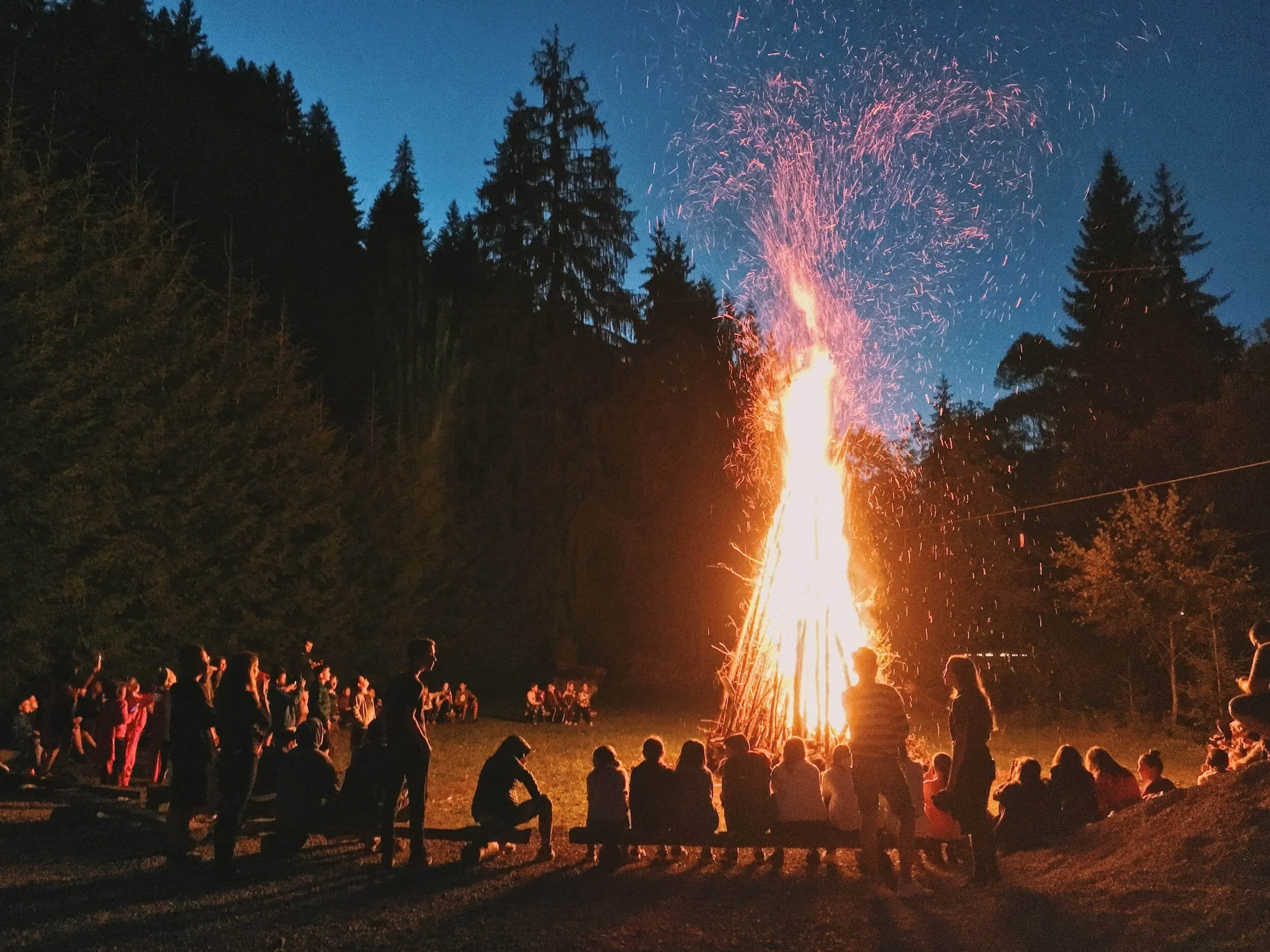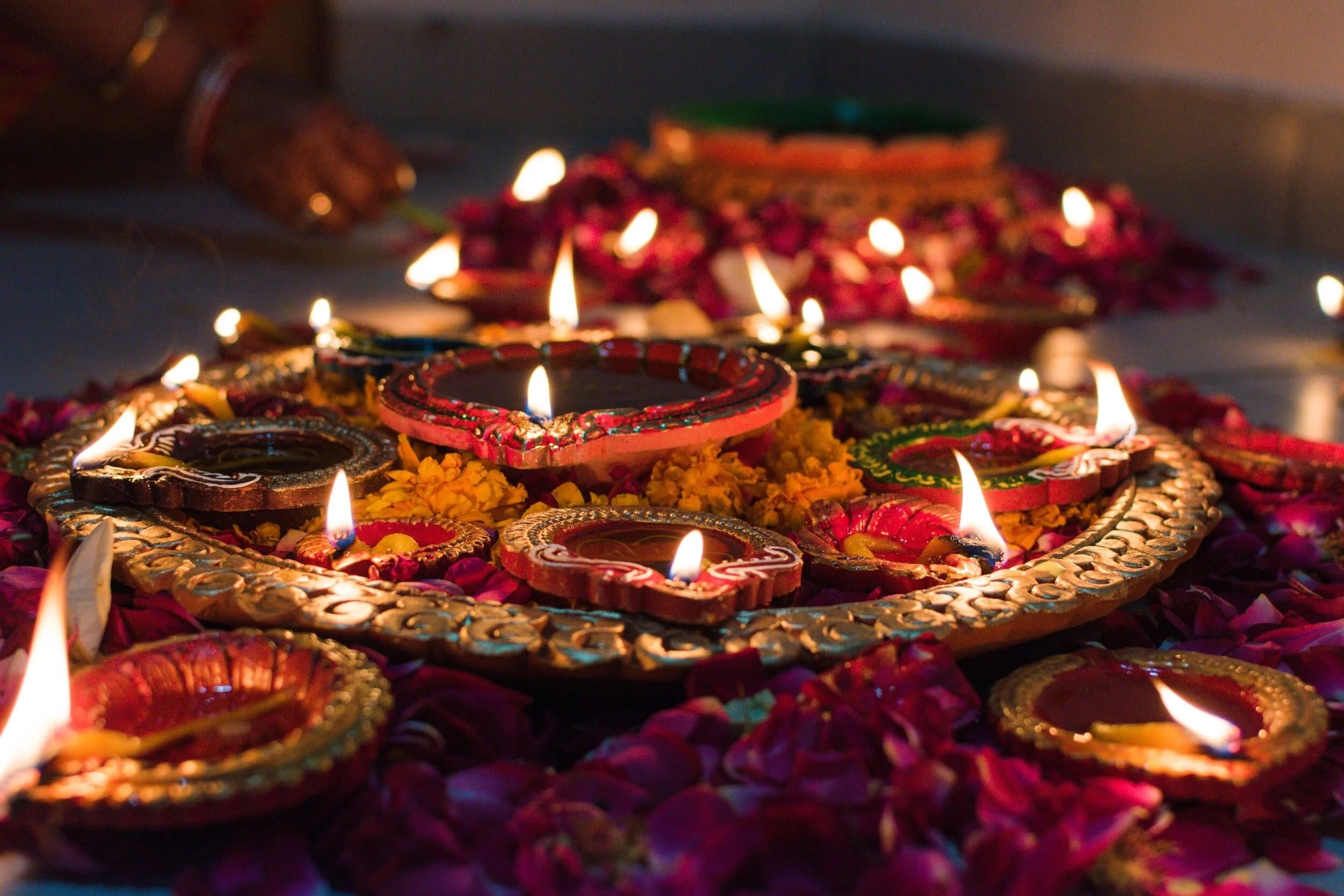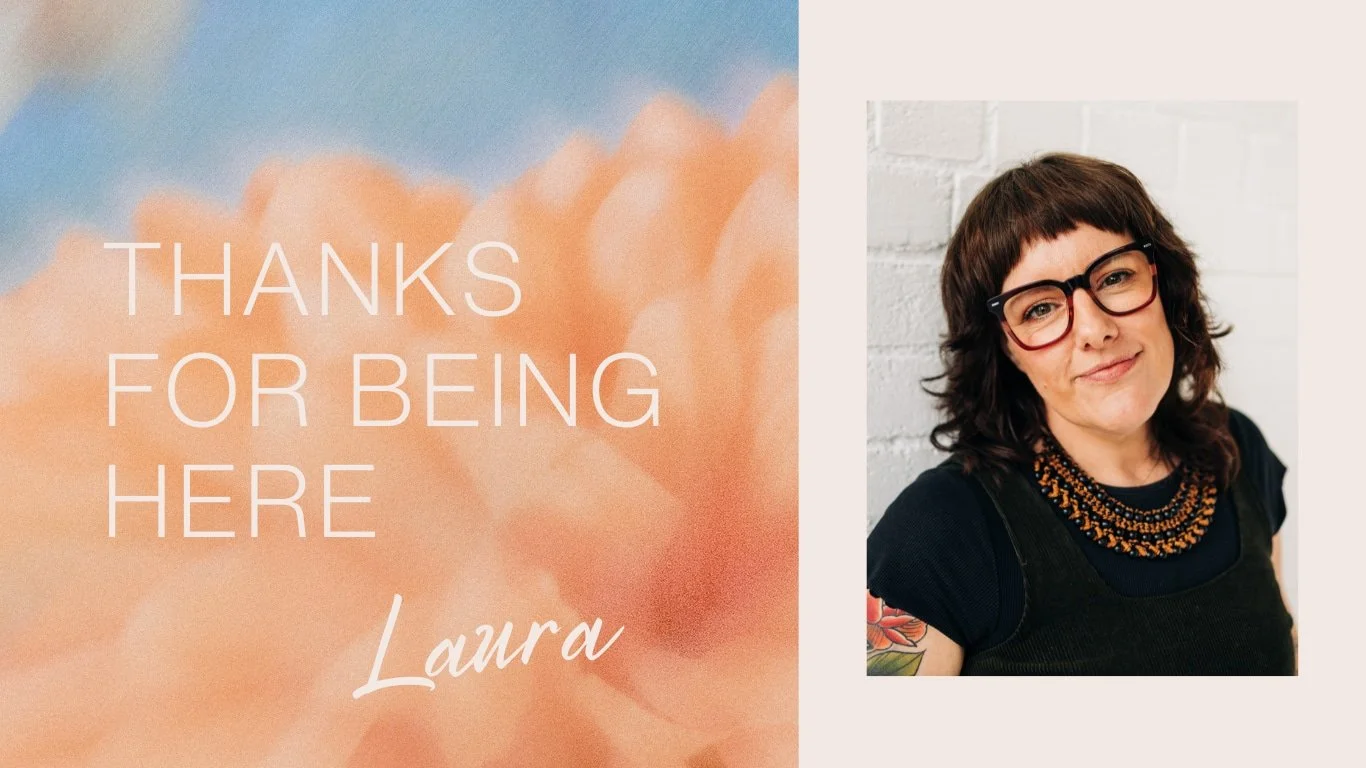Festivals of light & traditions for dark times
From Diwali to Yule: festivals of light around the world
As we move more firmly into the darker half of the year, I am reflecting on festivals of light and the way we instinctively seek out light in times of darkness. This might be the literal darkness of the long nights and shortening days, the metaphorical darkness and the shadow places within ourselves, or the collective darkness we sense in the wider world, especially during times of uncertainty, grief or upheaval.
If you’re new here I’m Laura, a counsellor, nature therapist, somatic therapist, meditation teacher and I’m also an initiated Pagan Priestess, although I prefer to call myself a space holder. My work is centred around gently guiding people back into relationship with themselves, with their bodies, and with the wider natural world.
When we think about light in the darkness, there’s something that feels instinctual about turning inward to make space for deeper contemplation. How do we find light in the dark? Can we become a light in our own darkness before we try to be a light for others? And what does light celebration look like?
Our search for light isn’t just poetic, it’s biological and ancestral. It’s hardwired into us.
I believe that this search for light isn’t just poetic, it’s biological and ancestral. It’s hardwired into us. For our ancient ancestors, the dark months of winter were not only symbolic, but a very real challenge. Survival depended on the success of the harvest and the strength of the community. The ability to endure the cold and scarcity of winter often came down to preparation, mutual support and holding a belief that the light will return. I talk about this from a Celtic-Pagan perspective in my post about yule and the winter solstice, but it’s worth reiterating: before electricity and supermarkets and central heating, winter was a test of endurance. The returning of the sun wasn’t just a comforting metaphor, it was life-giving so it makes sense that festivals that connect to light became a way to create hope in the darkness.
From the vibrant colours and fireworks of Diwali, the Hindu festival celebrating the triumph of light over darkness, to the warm glow of the Hanukkah menorah, where each candle is a symbol of perseverance and faith. From the delicate floating lanterns of Loy Krathong in Thailand, released onto rivers as acts of letting go and inviting renewal, to the twinkling festive lights of Eid, illuminating streets and homes with joy and gratitude, each of these celebrations of light speaks to the same truth: In the darkness, we can create our own light to illuminate our path. I share some deeper reflections about a few of these festivals of lights below.
The symbolism of light: all we're going to do for eternity is sit around the fire
In cultures around the world light symbolises love, knowledge and intellectual thought. Light opposes darkness, which is symbolic of hate, fear and ignorance. Because of this, it’s no surprise that we have a desire to connect with light, especially in darker times. The question is, how do we find an ember of light, love or hope even in the darkest of times?
I think an important part of finding that ember is not denying darkness. In many psychological theories there is the idea that our self has distinct parts or configurations. When we turn away from or deny parts of ourselves this can lead to internal conflict, with the abandoned parts of self, the parts that are in our shadow or darkness, spilling out at times. In a lot of different approaches to healing work, we’re looking to connect with our various parts, especially our ‘shadow’ parts, to integrate or reconcile them.
This is necessary, I believe, for all aspects of experience. From our feelings, to challenging past experiences if we bypass, avoid or deny we don’t process our experience and this leads to struggle and distress. This is even true of our experience around the seasons. If we can lean into the darkness of winter, knowing that The Wheel of The Year always turns and that Spring will return, we can be more accepting of where and who we are, and what we need as we navigate the darkness.
In the rest of this post I’ll be sharing a little more about festivals of light and what they might teach us about navigating the dark months of winter and the dark times we sometimes find ourselves in.
The Celtic-Pagan celebrations of Autumn Equinox, Samhain, Yule and Winter Solstice and Imbolc
From a Celtic pagan perspective, the theme of light is present during various celebrations through the year. The celtic-pagan calender follows the solar year, so it’s no surprise that the sun has a significant impact on the way that the year is celebrated.
The decent into darkness starts at the Autumn Equinox, which is also known as Mabon. Both the Autumn and the Spring Equinoxes mark a point where day and night are equal length. At the Autumn Equinox, as the balance tips toward shadow, we gather the last of the harvest and symbolically take in the sun’s fire We start to really lean into this darkness at Samhain. This is a time to celebrate the final harvest, expressing gratitude for the resources that will sustain and support us through the winter. We also honour our ancestors at this time, offering gratitude for their journeys, which have led to our own.
After Samhain comes Yule and the Winter Solstice, where we meet the peak of the darkness at the longest night of the year. at Yule we celebrate light, cycles of life, death and rebirth. We honour this by decorating our homes with twinkling lights and evergreen foliage. By Imbolc, the ember stirs and the world starts to come into renewal. Brigid, goddess of inspiration, healing and the hearth, is connected to this celebration and the ember we have carried all through winter now reveals itself as spring returns.
The dark half of the year isn’t just an absence of light, it’s an invitation to turn inwards, to rest and to conserve our resources. It’s also a reminder that the light will return.
Diwali, the Hindu festival of lights
I asked my friend Varun to share some reflections about Diwali and how he celebrates it with his family.
“Diwali also known as Dewali, Divali, or Deepavali takes place annually and lasts for five days, marking the start of the Hindu New Year. Diwali is a festival of light, where families come together and exchange of love, warmth, gifts and joy. Diwali symbolizes the victory of good (Knowledge) over darkness (Ignorance - Avidya). Lighting of oil lamps or candles is one way that we bring this symbolism into our homes or temples.
On this auspicious day, it is said that if someone needs money, Goddess Laxmi will come. If someone needs good health Goddess shakti will come and if someone wants education Goddess Saraswati will come. There is Puja (act of worship) to connect with different deities, with Mantras and offerings We make sure to keep our homes clean to invoke creative and positive reinforcing energies. We also decorate them and exchange sweets to represent leaving behind the bitterness of the past.”
What Celtic celebrations and Diwali seem to have in common for me is the intention to invite to bring light to the darkness, and to celebrate the return of the light through ritual, intention and devotion. Whether that’s through the Celtic focus on fire, flame and resourcing through the winter, or the Hindu lighting of lamps to honour knowledge, love and renewal. Both traditions reminds us to keep the flame alive within ourselves and our communities.
Creating our own rituals around light
When you’re not part of a spiritual or religious framework that honours festivals of light, finding ways to create meaning in a ritualistic way can feel unfamiliar or even a bit strange. It’s only been in the last 10 years or so that I’ve regularly had any kind of ritualistic or ceremonial practice. I gather with other people regularly, usually around a full moon or one of the Celtic Pagan celebration days. I also have my own regular rituals that I practice and I find them a grounding and comforting anchor, particularly when I’m struggling.
If you’re reading this there’s a good chance that you’re either culturally celebrating or aware of Christmas so you already have a frame of reference for celebrating light in the darkness of winter. What other ways could you explore your connection with the dark? This could be something as simple as lighting a candle each evening for five minutes, to connect with the light. Or standing in the sun each morning to connect with the winter light all through the colder months. You’ll also find a winter solstice and yule playlist and journal prompts here, which could also be a basis for your explorations or reflections.
I’s also like to invite you to consider:
What does your inner light look like right now?
Where in your life feels dark, and what kind of light might it need?
What small rituals, practices, or intentions help you reconnect to your own source of warmth?
We don’t have to chase the light. We can become it slowly, gently and in our own time.
And as you explore these ideas, know that you are not the only human seeking light in the dark. From the vibrant Diwali celebrations to the lighting of the Hanukkah menorah, the luminous Loy Krathong lanterns in Thailand, and the bright festive lights of Eid, there is a common thread where we, as humans, seek to bring light into our lives to help us to navigate through the darkness.
If you’d like to explore other resources to help you to connect with ritual, check out my post Simple Rituals for Grounding and Growth in Daily Life





